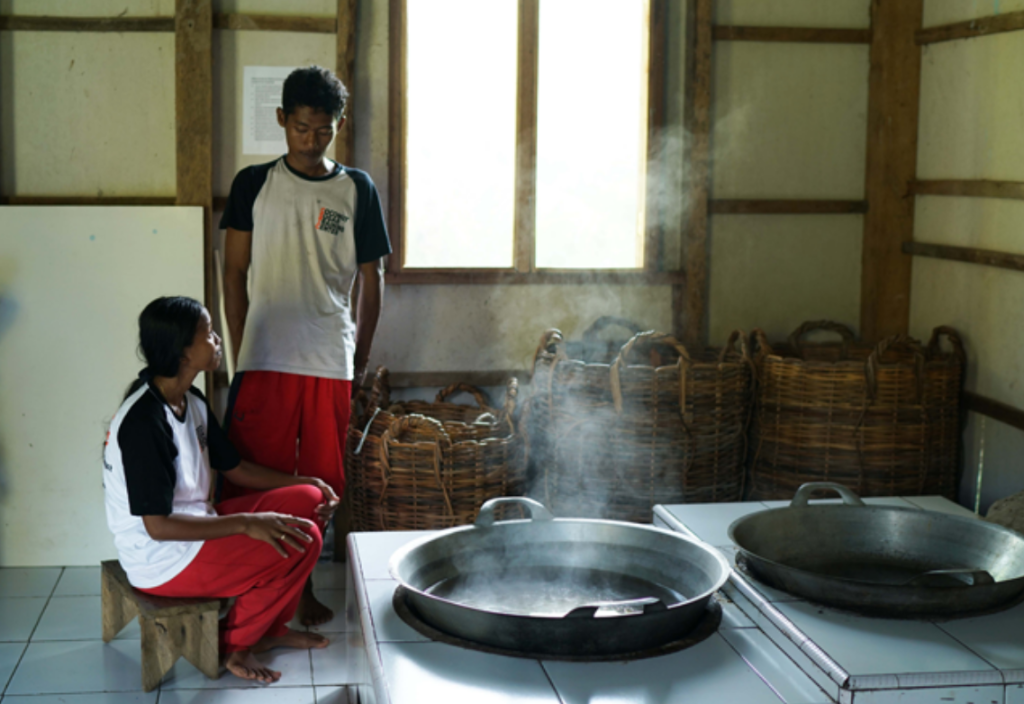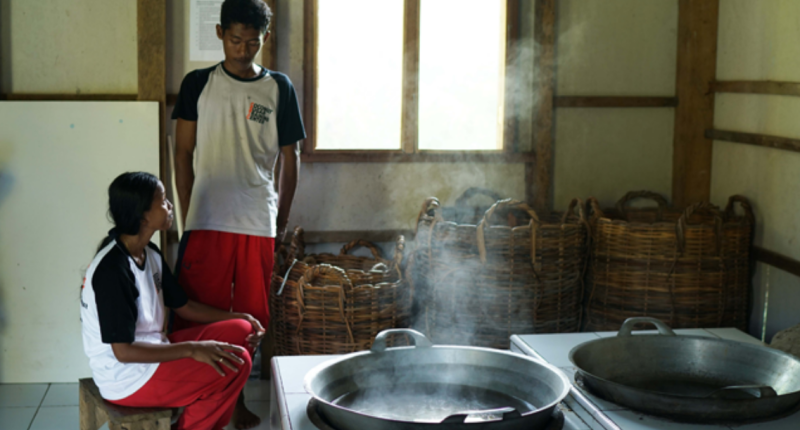Katingan Mentaya Project – Climate change is not just an environmental issue. It is a human one. Those at the Katingan Mentaya Project, an Indonesian carbon finance program focused on partnering with local communities to protect and regrow tropical forests, have first-hand knowledge of how climate change impacts people in low-income developing countries.
Climate change is set to affect all of us in one way or another, but the reality is that it will not impact everyone equally. Rich and middle-income countries tend to release more carbon dioxide and other greenhouse gas emissions but are the least affected. Unfairly, those below the poverty line tend to contribute the least to global warming and are also the most heavily affected.

Realistically, there can be no productive conversation about human well-being and poverty without including climate change. The three are intrinsically linked. We can’t attempt to resolve issues of poverty and not try to deal with what’s causing the problem. Climate change is one of the most significant sources of worsening poverty levels globally.
How is climate change linked to poverty?
Poverty can happen with or without climate change. However, it is undeniable that poverty worsens as our environment changes, and people must re-learn how to cope with and survive the new normal.
Climate change is linked to temperature increases, rising sea levels, and more extreme weather events. Each of these has knock-on effects on the world population, resulting in a lack of resources and more conflict. Efforts to end poverty too often forget to account for this link.
Climate change-driven poverty
Already, over 698 million people, the equivalent of almost 9% of the world’s population, are living in absolute poverty. The percentage of the international population living below the poverty line has been directly or indirectly linked to climate change. Poverty rates have increased because of the effects of climate change.
For instance, droughts are frequently worsened by global warming. Today, it is estimated that climate change has made droughts almost 20 times more likely worldwide. Less rainfall often has knock-on effects like lower crop yields.
Lower crop yields mean less food for the local and global population. Even beyond crops, less rainfall means fewer green pastures and less well-fed animals. The direct impact of drought can often, therefore, be hunger and poverty increases.
But the repercussions don’t end there. Beyond hunger, those who rely on a stable climate for their livelihood, like farmers, also lose their income when harvests are bad.
If conditions for labours like farming remain poor for an extended period, people must leave to find new lands and livelihoods to care for themselves and their families.
As the cycle continues, we start to see other issues emerging. For instance, competition over a specific resource heightens when global warming causes a reduction in that resource. We see this with water, food, arable land, and many other things.
Competition over resources can lead to conflict. Sometimes this conflict is small-scale. For instance, in the Democratic Republic of Congo, climate change has caused food production to fall and has increased competition for arable land in the area. As people vie for the land, ethnic tensions and instances of conflict have increased.
Of course, sometimes conflict occurs on a larger scale and is less obviously caused by climate change. For example, people who lose their livelihoods because of climate change are forced to move. Resource conflicts increase when geographic concentration exists due to too many people migrating to the same place. These issues can increase political instability as people look for both something to blame and a solution to their problems.
Economic opportunities can help reduce the impact that environmental events have and better allow those with low incomes to improve their living situations.
Which countries suffer the most from climate change?
Almost every country worldwide is feeling the effects of climate change. However, not all regions or countries are facing similar levels of threat. Generally, the countries suffering the most are located in areas facing more severe alterations in climate and those that don’t have the finances to manage the impending difficulties.
The Middle East and North Africa will likely see some of the worst effects of global warming. They expect the most severe increases in temperatures globally, potentially up to five times higher than the worldwide average because of trapped greenhouse gases. As a result of these sharp temperature inclines, more pressure will be put on crops and water. This is particularly problematic given that various countries in the area are already among the most dependent on imported food.
The world’s poorest countries are likely to be the hardest hit within the region. While wealthier countries can put preventative, adaptive, and restorative plans of action in place, poorer countries do not have the resources to do so.
It is estimated that Afghanistan will be one of the worst affected countries. Worst-case scenario estimations predict a 6ºC temperature increase by the century’s end, and rainfall in the area has already dropped an estimated 40%. Moreover, current conflicts in the country make it even more challenging to fight the fast-approaching impacts of climate change.
Whether country-wide or on an individual basis, it is almost always the case that those with a lower income level are the worst affected. For instance, when Hurricane Maria hit Puerto Rico in 2017, the rich had the option to leave the island and the ability to rebuild when they returned. Unfortunately, neither of these was an option for the poorer communities, and many were left for years waiting for assistance.
What are some solutions?
While climate change has a harsher impact on low-income countries, it remains a global issue regardless of economic success. We must combine efforts in the fight against climate change and poverty reduction.
Global warming has never been the problem of a single region, country, or community. As such, there is no one way to effectively solve climate change. The best solutions are multi-faceted. Some solutions must focus on mitigating climate change. In contrast, others focus primarily on helping vulnerable and poor people adapt to their current situation and build resilience to the continued and often intensifying effects of global warming.
The Katingan Mentaya Project works closely with local communities in East Asia to help commercialise their resources and lower the poverty rate without worsening their environment. For instance, the Katingan Mentaya Project launched the Coconut Sugar Training Centre in Basawang village in 2017 as part of its sustainable development goals to protect the habitats of critically endangered species. Here, previous illegal loggers are provided with a more sustainable and reliable product that can help improve their living conditions. Initiatives like these aim to reduce emissions while working towards global poverty reduction and allowing individuals to achieve more long-term and environmentally friendly economic growth.
In other areas, initiatives are underway to help farmers diversify crops and alter the design of their farmland. Mercy Corps runs some such projects and views them as a way to improve productivity and protect the soil during changing climates. Many are also looking at how we can grow hardier crops that are more resistant to harsher environments, whether that be hotter temperatures or less rainfall.
Some NGOs and governments, like the World Bank Group and the United Nations, are also looking at investing in insurance that can help farmers and other producers reliant on natural resources most affected by climate change. With insurance, those working in industries like farming would be better able to cope with a year of bad harvest and would be more able to continue or rebuild as needed.
Other solutions include funding low-carbon and clean energy technologies. The more we can reduce and stop climate change, the better.







